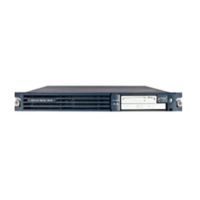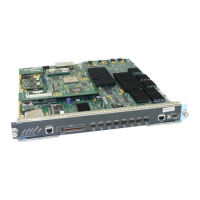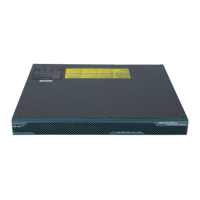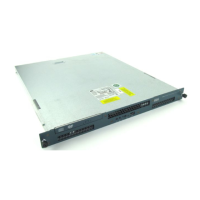Implementing IPSec Network Security on Cisco IOS XR Software
Configuration Examples for an IPSec Network with a Cisco IPSec VPN SPA
SC-142
Cisco IOS XR System Security Configuration Guide
Configuring a Static Profile and Attaching to Transport: Example
The following example shows a minimal IPSec configuration in which a static profile is created and
attached to a transport.
An IPSec access list named sample3 defines which traffic to protect:
ipv4 access-list sample3 permit ip 10.0.0.0 0.0.0.255 10.2.2.0 0.0.0.255
A transform set defines how the traffic is protected. In this example, transform set myset1 uses DES
encryption and SHA for data packet authentication:
crypto ipsec transform-set myset1
transform esp-des esp-sha
Another transform set example is myset2, which uses 3DES encryption and the MD5 (HMAC variant)
for data packet authentication:
crypto ipsec transform-set myset2
transform esp-3des esp-md5-hmac
A crypto profile named toRemoteSite is created and joins the IPSec access list and transform set:
crypto ipsec profile toRemoteSite
match sample3 transform-set myset2
end
The toRemoteSite profile is applied to a transport:
crypto ipsec transport
profile toRemoteSite
end
Configuration Examples for an IPSec Network with a
Cisco IPSec VPN SPA
This section provides the following configuration examples:
• Configuring IPSec for a VRF-aware Service-ipsec Interface: Example, page SC-142
• Configuring a Service-gre Interface: Example, page SC-145
Configuring IPSec for a VRF-aware Service-ipsec Interface: Example
The following example shows an IPSec configuration of a VRF-aware service-ipsec interface with a
crypto IPSec profile that uses RRI.
The interface service-ipsec command is set to 1 and is part of the customer_1 VRF. FVRF is the global
VRF (default). Clear traffic is coming from customer_1 VRF with a source IP address 100.0.1.0/24 and
is destined to 30.0.1.0/24, which is encrypted and sent over to the global VRF. Respectively, the
encrypted traffic from 30.0.1.0/24 is destined to 100.0.1.0/24 and is encrypted on the remote site or host
and decrypted on the router.
Configuring VRF
vrf customer_1
address-family ipv4 unicast

